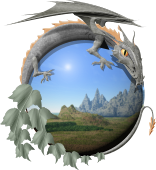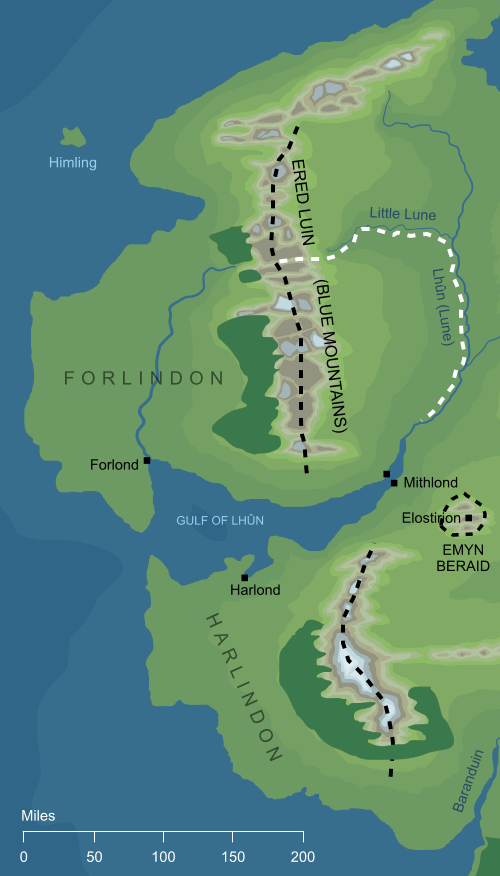- Cities and buildings
- Fields, plains and deserts
- Forests
- Hills and mountains
- Islands and promontories
- Lands, realms and regions
- Rivers and lakes
- Seas and oceans


 |
||||||||
|


Which personality type are you?
Take the Free mydiscprofile Personality Test to discover your core personality and your ideal job.   Which personality type are you? |
|
Dates
Founded II 11
Location
The far west of Middle-earth, on the shores of the Great Sea
Origins
Established by the Elves who remained in Middle-earth the destruction of Beleriand in the War of Wrath
Race
Divisions
Various2
Culture
Family
Settlements
Pronunciation
li'ndon
Meaning
'(Land) of music'3
Indexes: About this entry:
|
LindonThe last surviving lands west of the Blue Mountains
The dashed black line shows the approximate border of Lindon at the end of the Third Age, but in its earlier history, it had extended to the east of Ered Luin (as shown by the dashed white line). The Emyn Beraid (Tower Hills) were considered an outpost of Lindon, but did not fall within its borders.
The dashed black line shows the approximate border of Lindon at the end of the Third Age, but in its earlier history, it had extended to the east of Ered Luin (as shown by the dashed white line). The Emyn Beraid (Tower Hills) were considered an outpost of Lindon, but did not fall within its borders.
The green land to the west of the Blue Mountains; the only region to survive the destruction of Beleriand during the War of Wrath. Gil-galad, last High King of the Noldor, dwelt there during the Second Age. Notes
See also...Angmar, Aranarth, Araphor, Araval, Arnor, Battle of Fornost, Beleriand, Black Years, Blue Ring, Chronology of the Westlands, Círdan the Shipwright, Ciryatur, Deep Elves, Dor Caranthir, Eärendil, [See the full list...] Indexes: About this entry:
For acknowledgements and references, see the Disclaimer & Bibliography page. Original content © copyright Mark Fisher 1999, 2001, 2008. All rights reserved. For conditions of reuse, see the Site FAQ. Website services kindly sponsored by Discus from Axiom Software Ltd.Create your own Discus Job Profiles, or choose from a library of nearly 250 DISC role templates. |